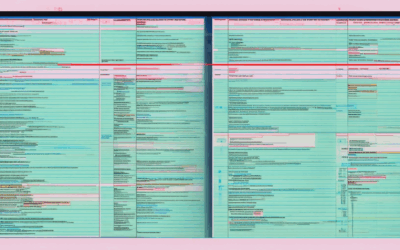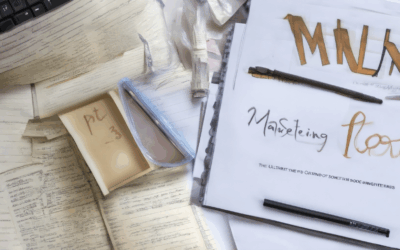The pursuit of getting published in literary magazines remains a cornerstone of many writers’ careers, offering both recognition and exposure in the competitive world of creative expression. While the landscape of literary journals may seem vast and sometimes overwhelming, it presents a wealth of opportunities for writers eager to share their work with a broader audience. From established titans like *The New Yorker* to niche platforms focused on specific genres or themes, literary magazines offer diverse avenues for writers to showcase their craft. Whether you’re seeking guidance on breaking into the scene, exploring the feasibility of earning income through freelance opportunities, or understanding submission trends, this guide will walk you through the essential steps and insights needed to navigate the world of literary magazines. By equipping yourself with knowledge about submission practices, acceptance rates, and resources, you can approach this challenging yet rewarding path with confidence and clarity. Let’s delve into the strategies, tips, and realities that will help you ignite your writing career and find the right literary magazine for your voice.
Key Takeaways
– Literary magazines receive thousands of submissions annually, with acceptance rates typically ranging from 0.5% to 2.5%.
– Factors influencing submission volume include themed issues, contests, submission platforms, and community promotions.
– Digital submissions are increasingly popular, offering convenience and broader reach.
– Competition is fierce, requiring strong, polished submissions to stand out.
– The New Yorker accepts unsolicited submissions, particularly for in-depth journalism, humor, and cultural commentary.
– Acceptance rates vary widely among literary magazines, emphasizing the need for persistence and refinement.
– Resources like JamesWhitfieldThomson.com offer further insights and submission guidelines.

How to Get Into Literary Magazines
To successfully get your work published in literary magazines, follow these organized steps:
- Research and Understand Submission Guidelines: Investigate each magazine’s submission policies on their official websites. Note submission methods (online, snail mail, email), required formats, word limits, and deadlines.
- Submit Original Work: Ensure your submissions are unpublished and exclusive to the magazine. Avoid resubmitting previously published work.
- Explore Contests and Open Submissions: Many magazines host contests with cash prizes. Check their guidelines carefully to qualify and avoid disqualifications.
- Study the Magazine’s Style: Analyze the type of stories and themes featured. Tailor your submissions to match their editorial focus and tone.
- Become Part of a Writing Community: Network with other writers and editors through online forums, social media groups, and local writing events. Build relationships that can provide mentorship and opportunities.
- Develop a Strong Portfolio: Compile your best work into a portfolio, possibly hosted on a personal website. Showcase consistency and a unique voice.
- Write a Compelling Query Letter: Introduce yourself briefly and explain why your work aligns with the magazine. Keep it concise and respectful.
- Personalize Submissions: Address each submission to the appropriate editor and tailor your cover letter to reflect their interests and preferences.
- Be Prepared for Rejection: Understand that rejection is common. Use feedback to improve and persist in submitting to different platforms.
- Stay Informed About Payments and Royalties: Check if the magazine compensates contributors and review their royalty policies to align with your expectations.
- Protect Your Copyrights: Ensure you own all rights to your work before submitting. Avoid submitting based-on ideas or stories from others.
By methodically following these steps, you can enhance your chances of gaining acceptance into literary magazines. Stay organized with a submission tracker and remain persistent in your pursuit of publication.
How Can I Start Writing for Magazines?
To start writing for magazines, follow these organized steps:
- Identify Your Niche:** Choose a specific area of interest that matches your passion and expertise. Consider topics like environmental issues or personal finance.
- Research Target Magazines:** Select magazines aligned with your niche. Visit their websites to explore their content style and editorial focus.
- Study Their Style:** Examine past issues to understand their tone, structure, and preferred article lengths. This helps tailor your submissions effectively.
- Craft a Query Letter:** Write a concise and compelling query letter. Include a brief bio, article concept, and why it suits the magazine. Attach a sample article showcasing your writing ability.
- Find Contact Information:** Use the magazine’s website to locate the editor’s contact details, such as email or submission forms.
- Network and Seek Advice:** Join online forums, LinkedIn groups, or Twitter communities to connect with writers and gain insights. Consider reaching out to freelance writers for introductions.
- Explore Submission Guidelines:** Check if the magazine accepts unsolicited submissions or prefers pitches from established writers. Some may require contests or open calls.
- Build a Portfolio:** Even without initial publications, compile a portfolio of your best work. Self-publish on blogs or create a personal website to showcase your skills.
- Persist and Adapt:** Be prepared for rejections. Analyze feedback to improve your approach. Stay motivated and consider taking workshops or courses to enhance your skills.
By following this structured approach, you can systematically work towards getting your articles published in magazines, leveraging persistence and continuous improvement to succeed.

How to Make Money Writing for Magazines
To make money writing for magazines, start by researching publications that align with your interests and expertise. Many magazines have specific guidelines for submissions, so review these carefully to ensure your work meets their requirements.
Building a portfolio is essential. Consider creating a personal website or blog to showcase your best work. Platforms like Medium or WordPress offer easy-to-use tools for setting this up, even if you’re new to web design.
Understand the payment models common in the industry. Some magazines pay per word or per article, while others may base compensation on the length or prominence of the piece. Look into forums and communities where writers discuss payment structures and negotiation tips.
Networking is crucial. Connect with other writers and editors through social media, online groups, and workshops. Attending events can open doors to opportunities and provide valuable feedback on your work.
To stand out, focus on unique angles and thorough research. Developing a niche can set you apart from generalists. Consider specializing in a particular area to become a sought-after writer in that domain.
Avoid signing unfavorable contracts without understanding the terms. Resources on freelance contracts can provide insight into protecting your rights and ensuring fair compensation.
Stay persistent. Publication may require multiple submissions. Keep refining your skills through classes and workshops to enhance your chances of success.
By following these steps, you can effectively navigate the magazine writing landscape and establish a successful career in this rewarding field.

How Many Submissions Do Literary Magazines Receive?
Literary magazines receive a significant number of submissions annually, with many receiving over a thousand submissions each year. Acceptance rates for these submissions typically hover between 0.5% and 2.5%, reflecting the competitive nature of the publishing industry. While exact figures can vary depending on the publication, most literary journals and magazines consistently receive a substantial volume of work from aspiring writers.
Factors Influencing Submission Volume
- Editorial Focus : Magazines that frequently publish themed issues or accept submissions year-round tend to receive higher volumes of submissions.
- Contests and Calls for Submissions : Literary magazines often publicize contests or special submission opportunities, leading to increased submission numbers during specific periods.
- Platform Usage : Many writers utilize submission platforms like Submittable or Zino to submit their work, making it easier for magazines to handle high submission volumes.
- Community Engagement : Literary communities on social media, forums, and other platforms actively promote submission opportunities, driving more traffic to magazines.
Digital vs. Print Submissions
While print submissions have traditionally been the primary method, digital submissions have become increasingly popular over the years. This shift has led to a rise in submission numbers, particularly for magazines that accept electronic submissions through their websites or platforms like Submittable.
Acceptance Rates and Competition
Despite the high volume of submissions, acceptance rates remain relatively low, creating a competitive environment for writers. This underscores the importance of crafting strong, polished submissions that stand out to editors.
For more insights into managing your submissions and improving your chances of acceptance, visit our resource hub at JamesWhitfieldThomson.com .
Does The New Yorker Accept Unsolicited Submissions?
The New Yorker does accept unsolicited submissions, but they typically seek original work that aligns with their editorial focus on in-depth journalism, humor, and cultural commentary. To submit, you can use their online submissions portal, which is accessible through their website.
For the best chance of acceptance, we recommend:
- Reading their submission guidelines carefully to understand their preferences and style.
- Submitting high-quality, well-written pieces that fit their audience’s interests.
- Considering the likelihood of acceptance based on the content’s relevance and quality.
Please note that The New Yorker may require you to pitch your ideas before submitting full articles, depending on the type of submission.
For the most accurate and up-to-date information, visit their official website at www.newyorker.com .

Acceptance Rate for Literary Magazines
The acceptance rate for literary magazines varies significantly depending on the publication. Below is a breakdown of the current acceptance rate for The Journal: A Literary Magazine and insights into the broader landscape:
- Journal: A Literary Magazine – 1.45% acceptance rate (average of 53.3 days per acceptance) 1
- General Landscape – Literary magazines typically have low acceptance rates due to high competition. Many publishers report acceptance rates below 3%, reflecting the challenging nature of securing publication 2 .
- Rejection Rates – Rejection rates are often underreported, which can skew acceptance rate statistics in favor of appearing higher than it truly is 3 .
Understanding acceptance rates is crucial for writers seeking publication. Below are some competitors in the literary space:
- The Missouri Review – Known for its rigorous selection process, acceptance rate approximately 1.8%
- Conjunctions – A leading poetry journal with an acceptance rate of around 1.5%
- AGNI – A competitive journal with an acceptance rate of roughly 1.2%
While these rates vary, the key takeaway is that gaining publication in a reputable literary magazine requires patience, refinement, and persistence. We encourage writers to keep submitting and to seek feedback on their work to enhance their chances of success.
For more insights into literary publishing and submission guidelines, visit our website .
1 Based on recent data from Duotrope, representing the median acceptance rate for The Journal: A Literary Magazine .
2 Acceptance rates for literary magazines often fluctuate annually, influenced by submission volume and editorial focus.
3 Rejection rates are rarely disclosed, contributing to the perception of higher acceptance rates than actual.





0 Comments